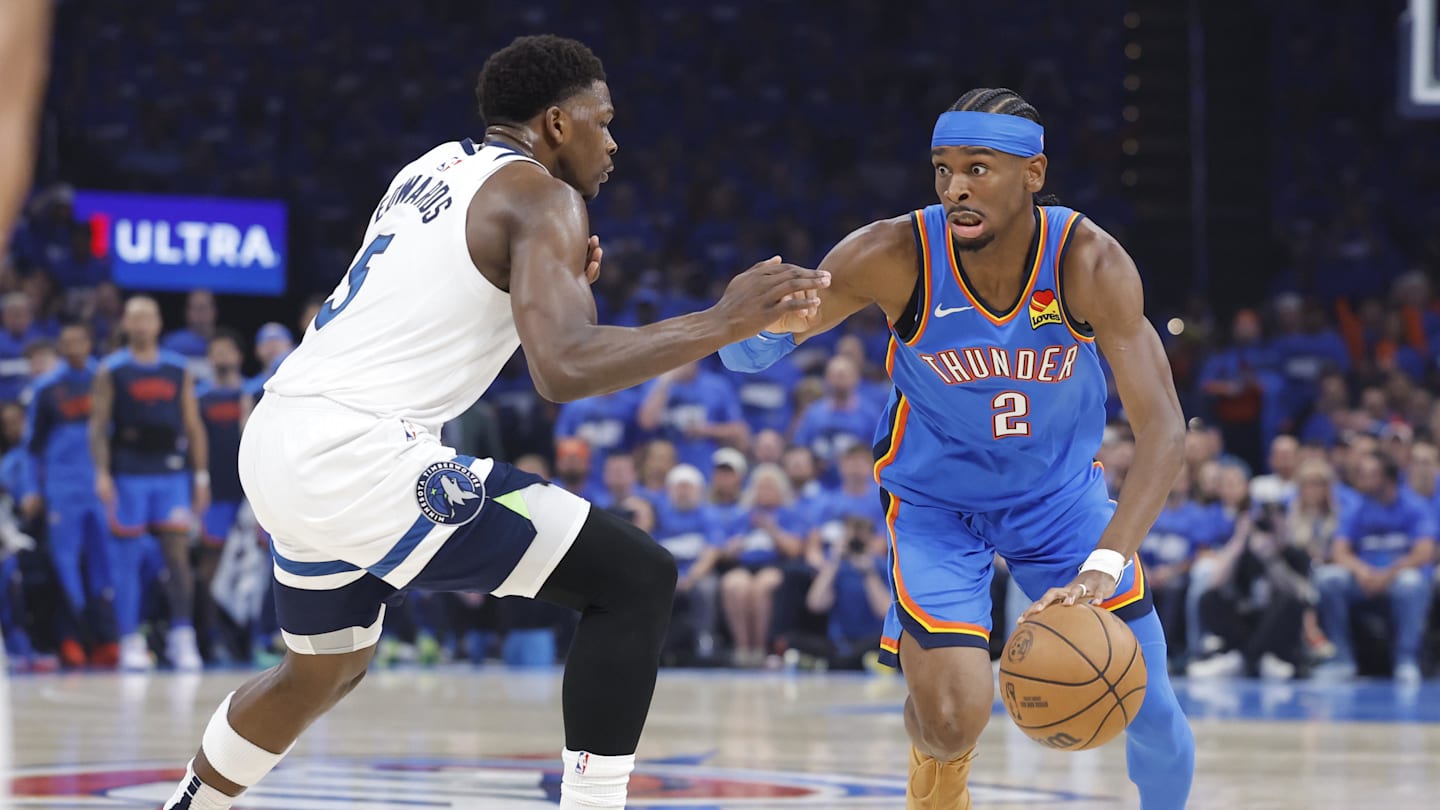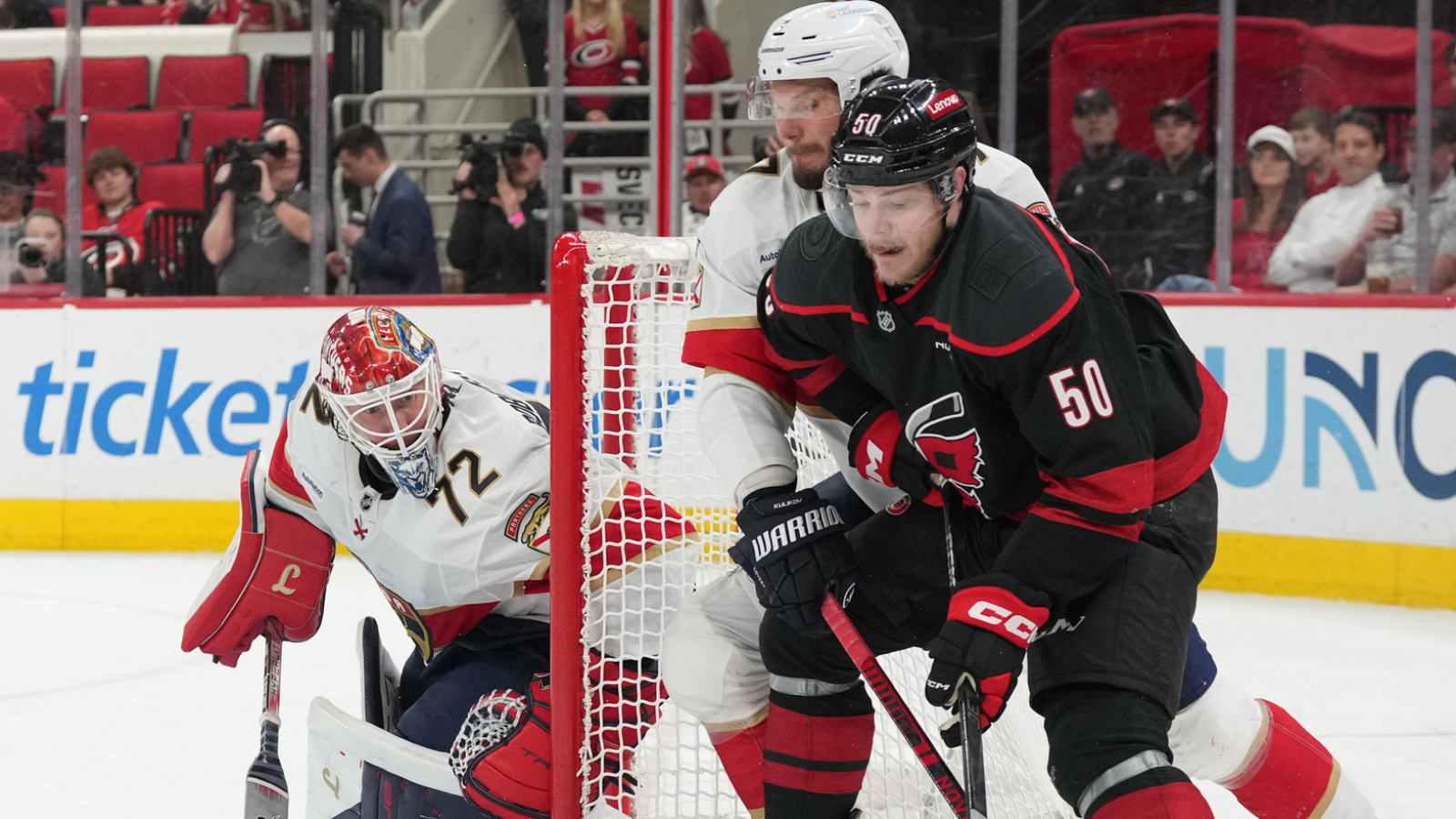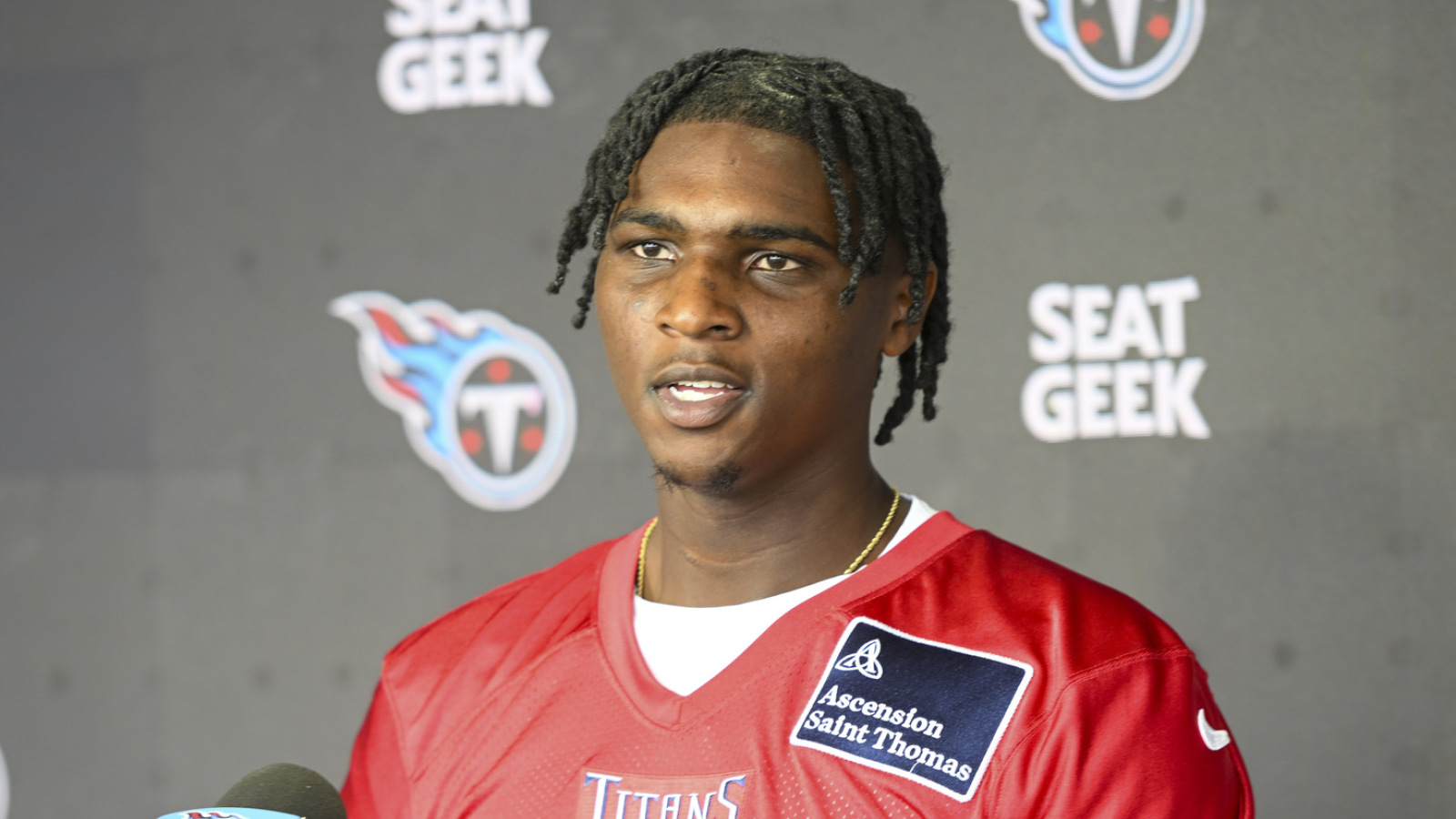
The first two games of the Western Conference finals are in the books and the Oklahoma City Thunder have absolutely dominated in the early goings. Led by MVP Shai Gilgeous-Alexander, the NBA’s best regular-season team dispatched the Minnesota Timberwolves in Games 1 and 2 without much trouble at Paycom Center. Everything has clicked. The defense has been throttling, the ball has been hopping and the vibes are over the moon.
The Wolves have a lot of work to do to extend this series as it moves to the Twin Cities for Game 3 on Saturday. Despite losing the opening set of games by a combined 41 points, there is hope. They kept it close in the first half of both games and have suffered terrible shooting luck across the roster, hitting 28.9% of their three-point attempts after ranking fourth in the NBA with a 37.7 collective three-point shooting percentage in the regular season. A possible bounce back in that department to couple with the other advantages of home court indicates this series could still prove to be competitive.
There was a lot to learn from the opening salvo of the series. Here are three takeaways from the Thunder’s two opening wins against the Timberwolves.
Both in the micro and the macro, how a team comes out of the locker room and performs in the third quarter defines them. Do they often come out firing on all cylinders? Or is surviving the frame without suffering too much damage the goal? Teams can win games and even championships with the latter habit. But if they consistently come into the third quarter looking to suffocate their opponent and send a message about how the second half will go … those are the teams to be afraid of.
The Thunder have proven to be that kind of team. They played excellent basketball coming out of the half during the regular season, posting the NBA’s best net rating of 14.0 in third quarters and outscored opponents by an astounding 299 points in that frame over the course of the year, 71 points more than any other team. OKC’s collective habit of third-quarter excellence carried over into postseason play, posting a greater point differential in those 12 minutes than every playoff team.
In the regular season, those spurts to kick off the second half usually extended a big lead into an insurmountable one for the 68-win Thunder. In the playoffs, with everything much more competitive, it’s proven to be a huge edge, and in the WCF, it has been the difference.
In Game 1, OKC entered the locker room down by one, then outscored Minnesota by 14 in the third quarter en route to a 26-point victory. In Game 2, the Thunder were up by eight after a hard-fought first two quarters, and yet again outscored the Timberwolves by 14 in the third to blow the game open. Some blame can be directed at Minnesota for letting go of the rope in those frames, but part of the Thunder’s identity is excellent third-quarter play. As such, the Timberwolves will be hard-pressed to consistently win those 12 minutes after halftime. But they can’t let it snowball like they did in Games 1 and 2. They have to eat the punches OKC throws and punch right back.
The Thunder boast a historically good defense and watching even just a few minutes of their play on that end this series shows why. They held the Timberwolves to a paltry 38.2% shooting mark from the floor during the opening games of the series, forcing turnovers left and right while keeping Minnesota off the boards and allowing only nine fast break points total in the series. The end result? A Wolves team that averaged 114.3 points per game in the regular season has been kept to 95.3 ppg on ghastly efficiency.
That isn’t going to win a playoff game, much less a series. Minnesota has to crack OKC’s defense to some degree if Game 3 will play out any differently than its predecessors.
Anthony Edwards is supposed to be the star who figures that out, and he seemed to make strides in Game 2. He was held to 13 shot attempts total in Game 1 but came out gunning on Thursday night, recording 18 field goal attempts in the first half before finishing with 32 points on 12-of-26 shooting. More importantly for his team, Edwards didn’t turn the ball over once and had six assists once OKC started collapsing on his drives. That’s a great offensive night against a defense of this caliber even after taking into account the young star’s 1-for-9 performance from three.
It ultimately went to waste because he got no help. Julius Randle submitted his first no-show of the playoffs with six points on 2-for-11 shooting before he was glued to the bench for all of the fourth quarter. Mike Conley and Rudy Gobert combined for eight points on 3-for-11 shooting. Minnesota needs more consistent production from that trio of veterans to complement the spear of the offensive attack in Edwards. More broadly, though, the team just has to start hitting open shots—shots OKC is gladly giving up.
As part of an effort to prevent easy paint points, the Thunder have given up 48 open three-point shots (defined as shots taken with the closest defender at least six feet away) over the first two games. The Timberwolves have made just 14 of those 48 attempts, a 29.2% shooting average. In the regular season, those same Wolves made a clean 40% of those shot attempts. These are wide-open shots and the Timberwolves are bricking them. OKC is extremely difficult to beat when shots are falling. It becomes close to an impossible feat if good shooters are missing without a defender in their zip code.
Minnesota has to find more offense. Making shots would help, obviously, but the team can’t afford no-show performances from the Randle-Conley-Gobert trio.
The story of the first two games of the series cannot be told without mentioning the whistle the newly minted MVP has enjoyed. When even ESPN commentators observe that Gilgeous-Alexander is a “free throw merchant,” the slithery guard hasn’t done much to fight against those allegations. He has 29 free throw attempts over the first two games and over a third of his points have come from the charity stripe. The foul calls Gilgeous-Alexander receives, and the lengths to which he’ll go to sell those calls, has become the big topic of the conference finals.
Which is too bad because Gilgeous-Alexander is really fun to watch otherwise! He scores unlike any other player in the league, moving to an unusual rhythm only he can hear while defenders fall over themselves trying to match his stop-and-go drives. He is the midrange marksman who should be the champion of all those who bemoan the surplus of three-pointers in today’s game.
But nobody wants to talk about that because he gets the benefit of the doubt with the referees to an extent rarely seen in the playoffs. Especially these playoffs, where officials seem content to let physicality rule. But for some reason that was abandoned in Oklahoma City this week. For all the criticism, Gilgeous-Alexander averaged only 8.7 free throw attempts per game entering the conference finals—a high number but well within range for a superstar scorer who mostly makes his living inside the arc. Then, suddenly, he’s averaging 14.5 FTA against the Timberwolves, who ranked eighth in the NBA in opposing free throws this season.
It is fair to criticize the league MVP for the borderline comical flailing he’ll do to get foul calls. But he’s going to keep doing it until the referees stop calling it. At that point perhaps the conversation will shift elsewhere. But until then, the foul calls are all anybody will want to talk about.
Minnesota turned to a zone defense in Game 2 for two primary reasons.
First, it was an effort to limit the above free throw numbers. Playing in a zone means multiple defenders can converge on Gilgeous-Alexander and Jalen Williams and others as soon as they enter the paint; the number of bodies allows for more careful defending and less contact, leading to fewer whistles. Second, it was coach Chris Finch’s first attempt to address one of the more surprising early developments of the series: OKC rendering Gobert completely useless. Not only is the French big man struggling to do anything offensively, he’s been shockingly inept defensively as well.
Thus, the zone the Wolves leaned into for the third quarter as Finch tried to kick-start the offense with Naz Reid manning the middle in place of Gobert and a smaller lineup overall. In theory, a zone can cover for the deficiencies that come with that strategy while giving the offense more pop. In theory.
In practice, it did not work. At all. Per ESPN, the Thunder scored 35 points while shooting over 50% from the floor against the Timberwolves’ zone. OKC recorded eight assists in the frame as everybody on the roster quickly figured out where the holes were once they got into the paint. The Thunder may lack pure scorers on their roster after Gilgeous-Alexander and Williams but pretty much every rotation player is smart enough to drive and dump off the ball over and over against a zone defense.
It was a good try by Finch and maybe it could work in smaller doses when Gilgeous-Alexander isn’t on the floor, given he appears to teleport with how quickly he gets from half court into the teeth of the defense. But the Timberwolves got torn apart when they tried it at length in Game 2 and can’t afford to go back to it in Game 3 or beyond.

